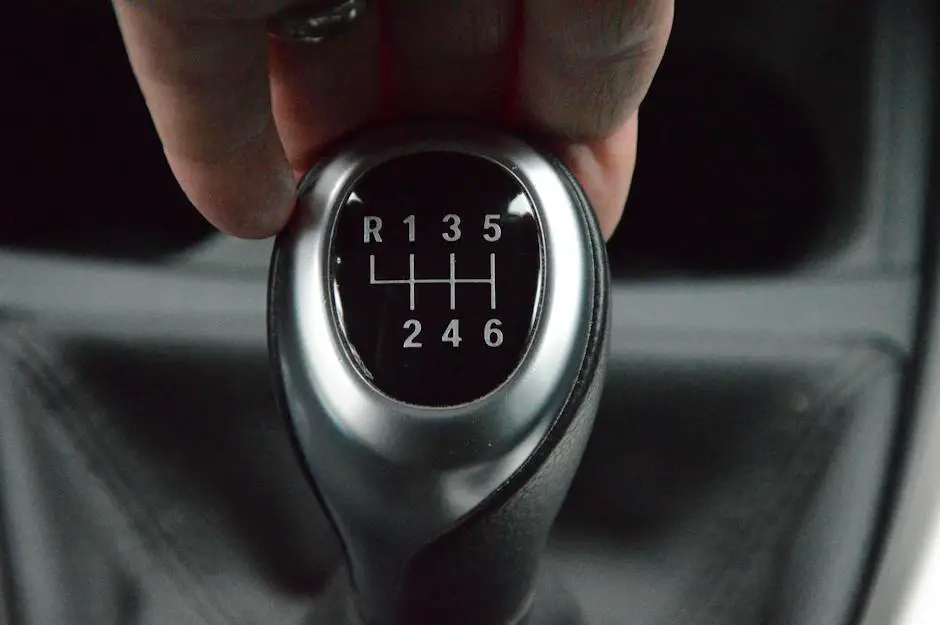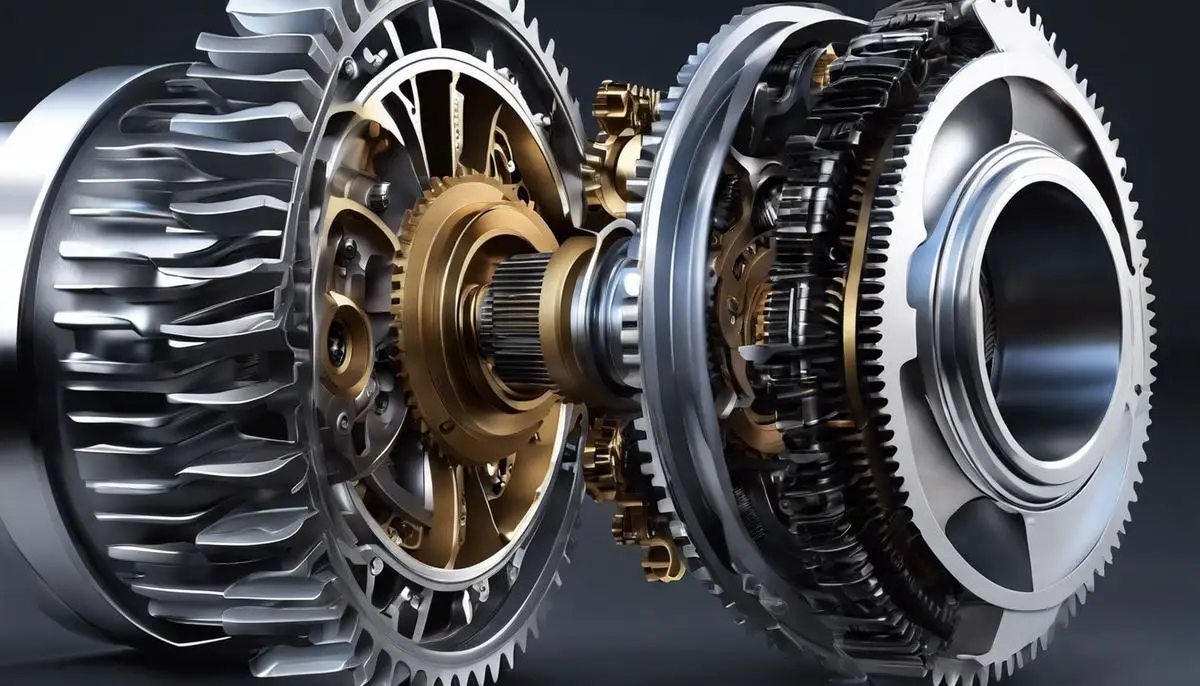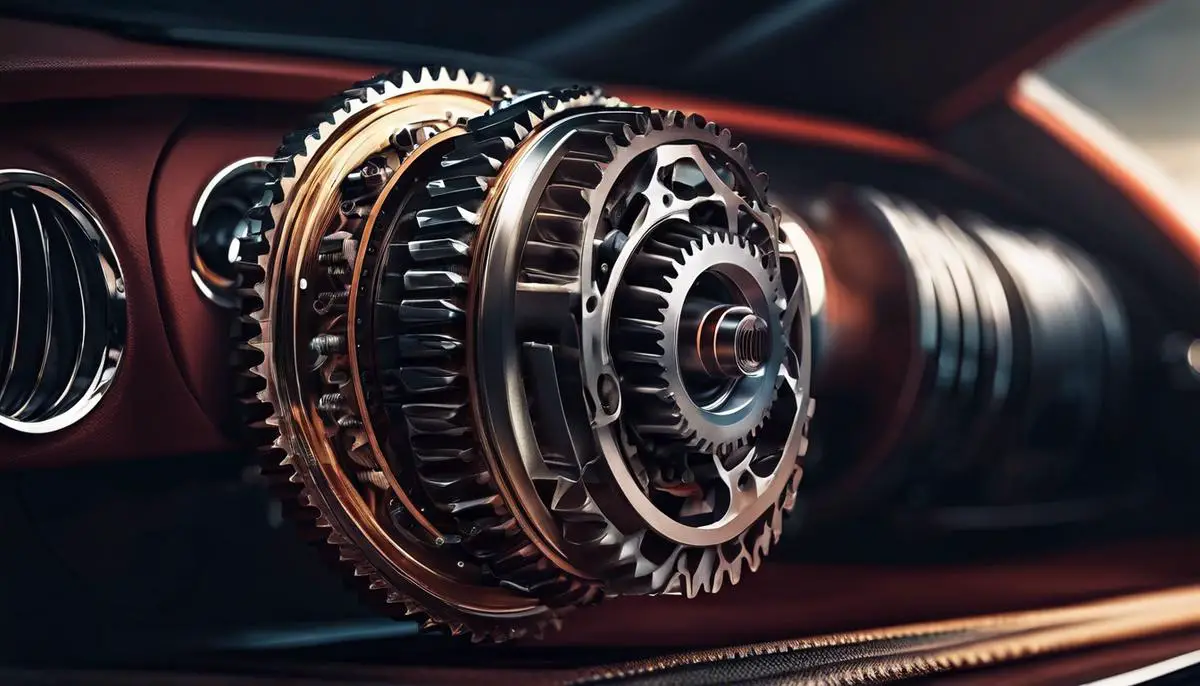Car transmissions are the heart of a vehicle’s performance, playing a crucial role in the delivery of power from the engine to the wheels. Understanding the subtle yet significant differences between manual, automatic, and continuously variable transmissions (CVT) can provide insight into a vehicle’s overall operation. Whether you’re diving into the hands-on nature of manual transmissions, exploring the convenience of automatic transmissions, delving into the complexity of CVTs, or just brushing up on fundamentals, a comprehensive analysis of these systems underscores their unique benefits and limitations, as well as their application in various types of vehicles.
Contents
Basics of Car Transmissions
Unearthing the Gears: Basic Principles Behind Car Transmissions
Car transmissions, what an exciting, intriguing world to delve into! Standing at the heart of every vehicle, the transmission, just like an intricate dance, synchronizes engine and wheels, allowing us to speed up, slow down, or reverse with a smooth finesse.
Imagine an orchestra. It’s the grand performance, with the conductor, the transmission, guiding an orchestra of gears, the car engine. A beautiful, symmetrical chaos creating harmonic music. That is basically what is going on under the shiny hood of every car.
Our journey begins with understanding the fundamentals. Transmissions come in two main types – manual and automatic. Each has its own charm, strengths, and complexities. Manual ones give the driver full control, a stick shift to literally switch gears. In an automatic transmission though, all the gear-changing is done without a second thought from you. Fun fact: It’s this ease of use that makes automatics more common in the United States!
Next, we spiral into the core functionality of a car transmission. Regardless of type, it primarily does two things: it transfers the engine’s power to the wheels and regulates the car’s speed power (torque) and rotations per minute (RPM). It’s like suddenly learning you have superpowers – being in two places at once!
Speaking of gear ratios, this exciting concept is essentially a mathematical expression that correlates the speed of the engine with the speed of the wheels. Lower gear ratios deliver high torque and low speeds, fantastic for when you’re tackling steep terrain or racing from a standstill. Higher gear ratios, on the other hand, ease up on torque but let the vehicle cruise at freeway speeds. It’s almost like learning the secret sauce recipe to your favorite burger!
Transmissions are also quite the environmentalists, believe it or not! Efficient fuel usage is their hidden superpower. By ensuring that the engine operates at an efficient RPM, they save fuel. Kind of cool, right? Cars taking care of Mother Earth while packing a punch of speed and power.
Maintenance isn’t an ugly monster when it comes to transmissions. But it sure can feel like one if neglected. The best practice? Check your car manual for recommendations on oil change. Remember, transmissions are the magical mechanical wizards loving clean lubricant.
But hey, transmissions, as complex as they may seem, are just about the harmony between power and control. They’re about the thrill of accelerating on the freeway, the joy of cruising on a summer’s day, and even the comforting hum of the engine as your car idles. So next time you’re driving, know that you’re a part of something fascinating, something many of us car enthusiasts call – The Symphony of Gears!
So, buckle up, gear up and enjoy the ride!

Manual Transmissions
Manual Transmission: A Deep Dive into what Makes it Tick
Transmission serves as the heart of your car’s mechanics, with manual being the old yet ever-reliable version. Loved by many for the enhanced control and thrill it offers, manual transmissions have a special place in the world of automotives.
First things first, what sets a manual transmission apart? The answer lies in its unique integration of a driver-operated clutch and a movable gear selector. Unlike automatic transmissions which utilize a torque converter, manual transmissions rely on you to select the correct gear and control the clutch. Herein lies the crux of the defining characteristics of manual transmissions.
A manual transmission, often called a ‘stick shift,’ is mechanical by nature. Let’s peel back the layers and delve into the functioning. Imagine a constant mesh gearbox, where all gears remain engaged but only one set is connected to the transmission shaft at any point. This happens through the action of ‘dog clutches,’ which are essentially collar pieces that connect to different gears when activated.
Your car moves forward when the engine rotates the flywheel. This movement gets transferred to the clutch plate. The plate, in turn, converts that motion into a customizable range of speeds using various gear ratios. As the driver, you control this conversion process via the gear shift.
So why are there multiple gears? Fundamentally, gears allow your car to operate efficiently through a wide range of speeds. Lower gears contain high torque but low speeds, perfect for when you first start the vehicle or need to drive up a steep hill. On the other hand, higher gears, with high speeds but low torque, are suited for cruising down an open road.
Shifting from one gear to another is a ballet of coordination between your hand and foot. Your foot disengages the clutch, releasing it from the drive wheels while your hand selects the desired gear. Releasing the clutch re-engage the transmission. This process is why a manual gives a more immersive driving experience.
However, mastering a manual transmission doesn’t happen overnight. It’s a skill that demands practice and patience, but the payoff is undeniably satisfying. The connection between you and your car becomes tangible, something you can feel with every shift and turn. This sensation is what makes manual transmissions genuinely captivating and perennially popular among auto enthusiasts.
Even within the realm of manual transmissions, there’s a great deal of variation to explore. From synchronized and unsynchronized gearboxes to different types of clutches, each design and variant adds its spin to the driving experience. At the end of the day, the technology’s function is the same, but the joy it brings to each driver can be profoundly individual. So, go and make the most of the manual transmission.
Lastly, let’s highlight an often overlooked, yet significant aspect of manual transmissions—maintenance. Like any other machine, they need regular care. Timely change of transmission fluid, regular inspections for unusual noises or jerky movements, and making sure the clutch is neither too loose nor too tight are some factors critical in prolonging the life of a manual transmission. By maintaining an upkeep routine, you ensure you’ll be shifting gears smoothly for many, many miles to come.
That covers the basics of what makes up a manual transmission and a glimpse into its working mechanism. As complex as it may seem, once you get the hang of it, the intricacies of manually shifting gears can give you a sense of fulfillment like no other. That’s the charm of manual transmission, a testament to the glory of hands-on driving experience.

Automatic Transmissions
Unraveling the Uniqueness of Automatic Transmissions
Dive into the world of automatic transmissions and discover a world filled with convenience, modernity, and engineering sophistication. While it doesn’t possess the hands-on appeal of the traditional manual transmission, automatic transmissions come packed with a plethora of technological advancements that further streamline your driving experience.
Unique Design Elements Of Automatic Transmissions
Automatic transmissions are a marvel of engineering design. Revered for their compact and relatively complex structure, these transmissions are built with an ingenious array of components that come together to automate gear shifting. Unlike manual transmissions that rely on the driver’s skill and concentration for gear shifts, automatics dynamically adapt to driving conditions with minimal input from behind the wheel.
The heart of an automatic transmission is the planetary gear system. Named after its resemblance to planetary orbits, this system utilizes a central, or “sun” gear, surrounded by smaller “planet” gears. Their interconnection allows for multiple gear ratios within a compact space, efficiently channeling engine power to the wheels. This mechanism distinguishes automatic transmissions, fostering seamless and intuitive driving experiences.
Advancements in Automatic Transmissions
Automatic transmissions have continuously evolved, marching in step with advancements in automobile technology. Modern automatic transmissions come equipped with a wide array of gears – typically six, eight, or even ten. This spread of ratios enables optimum engine performance across a broad spectrum of speeds, improving power delivery and fuel efficiency.
Electronic control units (ECU) are another feature that enhances automatic transmissions. These smart systems regulate gear shifting based on speed, engine load, and driving conditions. ECUs in automatic transmissions have sophisticated algorithms to evaluate these parameters and determine the optimal time for gear shifts, eliminating the guesswork and ensuring a fluid ride.
Unique Functional Aspects Of Automatic Transmissions
One noteworthy functional aspect of automatic transmissions is their torque converter. This hydraulic device replaces the clutch found in manual transmissions. Acting as a bridge between the engine and transmission, the torque converter allows the vehicle to stop in gear without stalling. It smoothly transfers power from the engine to the wheels, prioritizing comfort over sporty performance.
Conclusion
While the thrill of a manual transmission might appeal to driving purists, the ease, comfort, and sophistication of automatic transmissions have secured their place in the majority of vehicles on the road today. The cogs and gears of an automatic interact in intricate dance, free of human missteps, exemplifying harmony between driver and machine. Undoubtedly, automatic transmissions stand as a testament to automotive innovation and progress, continuing to redefine the parameters of the driving experience.

Continuously Variable Transmissions (CVT)
Continuously Variable Transmissions (CVTs) represent a different beast altogether in the world of automotive transmissions. This technology seeks to break the conventional mold of predefined gear ratios and introduces a more flexible, fluid system of transmitting power from your engine to your wheels.
In a CVT, there are no gears as we know them in manual or automatic transmissions. Instead, there are two pulleys connected by a belt. One pulley is connected to the engine (input shaft), and the other delivers power to the wheels (output shaft). These pulleys have the ability to change their diameter dynamically in response to engine demands, thus altering the “gear” ratio. This constant fluid adjustment allows a CVT to provide the most efficient power transmission, providing fluid acceleration without perceptible gear shifts.
The benefits of a CVT are numerous and attractive. First off, they deliver smooth, seamless acceleration, eliminating the distinct shift you would feel in traditional transmissions. This makes for an exceptionally comfortable ride. CVTs are also prized for their fuel efficiency. Because they’re designed to keep your engine in its optimal power range, CVTs can produce better mileage compared to their traditional counterparts.
However, these benefits do not come without drawbacks. For the zealous driving buff, a CVT might lack the excitement offered by manual or conventional automatic transmissions – no palpable gear shifts, no manual control over gear selection. While technically any engine can be mated with a CVT, they’re often chosen for smaller, less powerful engines, which can be a letdown for the performance enthusiast. Finally, longevity and maintenance may pose challenges. CVTs are built with complex parts that may be more prone to wear and tear, possibly leading to pricey repairs.
A person’s views on CVTs, like many things in life, largely hinge on what they value in their vehicle. If comfort and smooth delivery of power with excellent fuel efficiency are your priority, a CVT should be your gearbox of choice. However, if you are a committed gearhead seeking engagement and excitement behind the wheel, you might want to stick with a good old manual or traditional automatic.
Even in this advanced era, where electric vehicles are promising a future without transmissions, CVTs continue to hold their own in certain parts of the car market. As we progress, it’s equally fascinating and heartening to see these old and new technologies co-existing, each with its unique advantages, broadening our range of choices on the open road.

Photo by palivo_duracka on Unsplash
Indeed, the world of car transmissions is as diverse as it is dynamic. Each type of transmission—be it manual, automatic, or CVT—brings its own set of advantages and drawbacks that impact the vehicle’s performance, efficiency, and driving experience. Understanding the principles that govern these systems, from the direct control offered by manual transmissions to the seamless variability of CVTs, allows us to appreciate the sheer brilliance of automotive engineering. As the various components in manual, automatic, and CVT transmissions harmoniously synchronize to transfer power from the engine to the wheels, they enable us to navigate our world with unparalleled ease and convenience.



